
Are you a coffee fanatic? If so, you've likely heard of Bacha Coffee, a café with that vibe that's reminiscent of a Wes Anderson film. It all started in the historic Dar el Bacha Palace that was built in 1910. The area hosted influential cultural and political figures who enjoyed exquisite Arabica brews.

With the palace's interior, with its carved cedar wood ceilings, black-and-white marble floors, and vibrant zellige mosaics, showcases Moroccan craftsmanship. These design elements are now reflected in Bacha Coffee's outlets. Since its closing 60 years ago, Bacha Coffee revived its reputation by sourcing a diverse selection of 100 per cent Arabica coffees from around the world.
Adding to Bacha's Coffee Bag Gift Box collection are two new blends: King of Africa and Moroccan Sahara. The birthplace of civilisation, Africa is a continent that's hammered by an unforgiving environment. Rich with minerals, all these climate hard-loving produces some pretty unique characteristics in their beans. For the King of Africa Coffee, the lush highlands of Africa yield notes of wild hazelnut, cracked cacao and honeyed banana. While the Morocco's Atlantic coastlines are assailed by the unrelenting waves and sea tang, which gives it that mix of oasis coconut, honeyed nuts and the warmth of cracked cacao beans. Each Coffee Bag Gift Box contains 12 single-serve drip coffee bags.
Discover the King of Africa and Moroccan Sahara at all Bacha Coffee boutiques in Singapore or online. And if those blends do not catch your fancy, don't worry, because Bacha offers over 200 coffees to choose from.
Everybody is making a quick buck whenever a holiday rolls around. But to create a holiday from scratch? *slow clap* That's capitalism at its finest. #allhailthealmightydollar Today is National Coffee Day, so in a bid to keep people caffeinated, have Mormons clutch their pearls and contribute to the economy, we curated a list of coffee-centric treats, ranging from traditional kopi to coffee-infused cocktails. So, for all the coffee aficionados out there, why not venture out and savour a delightful cup of coffee?
We start with the classic kopi. Everybody loves it and The 1950s Coffee serves arguably one of the best kopi in Singapore. Awarded with a Michelin star, this place has been doling out kopi since the 1950s. Their kopi stands out for its full bodied, velvety smooth texture without being overly diluted. However, the star attraction is their signature Kopi Tarik. A queue for this stall is a common sight and their toasts usually sell out by noon. A hit among many locals, The 1950s Coffee definitely serves a mean cup of traditional kopi.
Located in an old shophouse, the place is reminiscent of old school provision shops. Chye Seng Huat Hardware has a cafe below and a coffee school and retail space on the second floor. Owned by the folks at PPP Coffee, the cafe specialises in cold brews, which is great for living on the equator. Using specialty-grade single origin beans, their black cup of joe is brewed from PPP Coffee’s Ethiopia Suke Quto, boasting floral scents with notes of peach, earl grey tea and citrus.
Hailing from Shenzhen, There Was No Coffee opened with the premise of providing a healthier alternative to the high sugar content found in coffee elsewhere. Ditching syrups and sugar, the cafe solely relies on fruits to provide sweetness to their drinks. Our durian obsessed nation might be intrigued by their signature Durian Latte, where latte is poured over durian puree. Other flavours include the Avocado Latte, Persimmon Latte, and the Watermelon Latte—all made with real fruits. It's an unusual menu but it works.
Other than the regular selection of coffees, Bearded Bella serves signature coffee concoctions that aren't commonly found elsewhere. Take the Coffee Slushies that are blended with espresso, syrup and milk tea; anything with ice and caffeine just rings true for our weather. Try the Citrus Coffee Spritz. It's a refreshing blend of Bearded Bella’s Seasonal House Blend, orange juice, soda water and honey.
If you are an avid coffee drinker, you have definitely heard of King’s Cart Coffee. Situated at Joo Chiat, King’s Cart Coffee puts their own spin on local dishes and ingredients. Presenting their Singapore Signature Menu: mostly coffee-centric dishes that includes their “Sng Buey”, the perfect thirst quencher that consists of a mix of espresso and the sweet and tangy homemade sour plum. For desserts, there is the ‘Ah Bo Ling’, glutinous black sesame balls served with a shot of espresso, creating a flawless blend of bitterness and sweetness that tantalises the taste buds!

Looking for an environmentally friendly option to coffee? Look no further for Prefer produces their coffee by upcycling food manufacturing by-products sourced from local companies. This includes day-old bread from Gardenia, soy bean pulp from Mr Bean, and spent barley grains from local breweries such as The 1925 Brewing Co. While Prefer’s grounds are caffeine-free, the upside is the ability to add caffeine derived from tea and adjust levels as preferred. Prefer’s coffee can be ground fine for espresso, or medium coarse for drip brewing. The extraction process is as per normal, taking the same amount of time when brewed using a coffee machine. Baristas and coffee drinkers can also appreciate the crema that allows for latte art.

At Republic, indulge in the Kim Sisters cocktail, a luxurious interpretation of the classic Irish Coffee. The South Korean singing group used to be offered whiskey, chocolate and coffee as tokens of appreciation after performances, which inspired the ingredients in this cocktail. This refined concoction harmonises creamy caffeine, rich chocolate, and subtle nuttiness. Each sip offers a medley of flavours, an experience that coffee lovers will relish.

A welcome punch served exclusively during the Punch Room Afternoon Tea Ritual, The Coffee Punch is made with cold-brewed Tanamera coffee, renowned for its smooth finish and mild acidity. It is mixed with spiced rum, demerara sugar, and coconut water for a touch of tropical freshness and sweetness. This refreshing yet invigorating punch adds an exotic twist to the traditional afternoon tea experience.

Paying homage to the bustling city of Chicago, Manhattan serves up a mean Razzle Dazzle Cocktail, but with a twist. A digestif-style concoction, it is a mix of bitter melon and hibiscus-infused Pierre Ferrand 1840 cognac, black sesame-infused Mancino Chinato vermouth, and Luxardo Espresso liqueur. The citrusy notes of the cognac complements the bitterness of the coffee surprisingly well. Ending off with a touch of elegance, the cocktail is delicately spritzed with gold dust tableside.

Coffee has a rep. And it's a well-earned rep, especially in a society that practically reveres as something to kickstart the rest of the day. But you can give that dark brew a little more edge like alcohol. And one Australian company has run with that and made it their forte.
Mr Black—the brainchild of Philip Moore, one of Australia’s foremost distillers, and Tom Baker, coffee-fiend and designer—made its Singapore appearance at the 2019 Asia's 50 Best Bars awards ceremony. Bearing a range consisting of Cold Brew Coffee Liqueur and Coffee Amaro, it can be poured over ice and enjoyed during that morning meeting as you quietly sip with a cryptic smile on your face—some might say, a "shit-eating grin".
ESQUIRE: Do you find any correlation between your past industrial design work to what you do now?
TOM BAKER: Once a designer, always a designer. While my day-to-day job now is very different from what it was, the approach is the same: thinking, iteration, and craft. Our goal is to make products that both taste great and speak to people and their desires. That’s what being a designer is, and I still do that every day at Mr Black.
ESQ: What’s the trickiest part of the cold brew-making process?
TOM: Consistency. The production of Mr Black is as much a science as it is a craft. Our head of coffee has a PhD in Chemistry—we’re that serious about it. We’ve made over 1,400 individual batches of Mr Black now, and we have an encyclopaedic knowledge on the impact of coffee varietal, seasonality, roast, and ambient temperature to name just a few variables. All of this rigour is in service of creating an exceptional and consistent bottle of coffee liquor each and every time.
ESQ: There’s as much thought that goes into the packaging as well as with its contents.
TOM: The goal of our packaging is simple: reflect our religious worship of the miracle of coffee, and do justice to the craft and care that goes into the divine liquid inside each Mr Black bottle.
ESQ: Is there any botanical you want to marry with the coffee in the future that you’re unable
to do so now?
TOM: The biggest challenge we have is not with botanicals, but rather coffees. We’re always looking to explore the flavour of coffee through our spirits. By way of example, recently we’ve been working with naturally processed coffees which are subject to a light fermentation before processing. They make delicious hot brews, but their intricate flavour can be lost in a cold-brew technique. There are more isolated flavours in coffee than red wine—Mr Black’s goal is to take that world into the night.
ESQ: What is the worst thing you can do with a Mr Black cold brew or an Amaro?
TOM: People never believe me, but coffee genuinely works well in most drinks. It’s delicious with tonic, soda and ginger beer. With whiskey (to make a Cold Fashioned), it becomes boozy and nuanced. From a craft coffee cocktail before dinner to a neat Mr Black after, there is genuinely no right or wrong way to drink it. The worst thing people can do is not give it a try—Mr Black is truly delicious and has to be tried to be believed. Coffee works with everything—except fish. That’s a strange pairing—don’t do that!

ESQ: I don’t suppose the Mr Black line would have a decaf liqueur in the future? Or is decaf just anathema to the very idea of coffee?
TOM: Death before decaf! Mr Black has the perfect amount of caffeine in it. It’s low enough that it allows you to have one drink before bed without keeping you up all night. Equally, if you want to turn it up, have a few and you’ll start to experience the caffeine a little more.
Mr Black is available online
Originally posted on 6 June, 2019
Amid rising concerns about climate change, many companies are innovating solutions to address these problems. Within the food industry, some companies are investing in development of meatless meat alternatives. However, meat and dairy products aren't the only foods with a high carbon footprint. It's been found that a cup of joe can generate an estimated 29kg of CO2 per 1kg. Enter Prefer’s beanless coffee.

Founded by food scientist Tan Ding Jie (chief technology officer) and former neuroscientist Jake Berber (chief executive officer), Prefer aims to create sustainable solutions with food. With Tan's expertise in the field and Berber's experience in the investment sector, the two set up Prefer, which is the first of its kind in Asia.
While there are other bean-free coffee producers that use chickpeas, rice hulls and seeds to make their product, Tan and Berber wanted to push the envelope by using food waste.
Prefer produces their coffee by upcycling food manufacturing by-products sourced from local companies. This includes day-old bread from Gardenia, soy bean pulp from Mr Bean, and spent barley grains from local breweries such as The 1925 Brewing Co. Once gathered, the three ingredients are then blended in a secret ratio and fermented, roasted in an oven to bring forth aroma and flavour, and grounded till preferred fineness. Fermentation also enables Prefer to create flavours that can replicate coffee profiles sourced from far-away lands such as Ethiopia and Columbia within the same facility. This in turn, mitigates the environmental impacts that come with importing food and its price markups.

While Prefer’s grounds are caffeine-free, the upside is the ability to add caffeine derived from tea and adjust levels as preferred. Prefer’s coffee can be ground fine for espresso, or medium coarse for drip brewing. On the nose, drinkers can pick up a malty and nutty aroma reminiscent of dark roasted coffee. When sipped, flavours of cereal and hazelnut come through with an earthy bitterness and mellowed acidity. The extraction process is as per normal, taking the same amount of time when brewed using a coffee machine. Baristas and coffee drinkers can also appreciate the crema that allows for latte art.
At present, Prefer is available at cafes including Dough, Brash Boys, First Story Cafe, Foreword Coffee Roasters, Parched by Parchmen.
We did the grinding, drinking, and hyper-caffeinated testing for you.
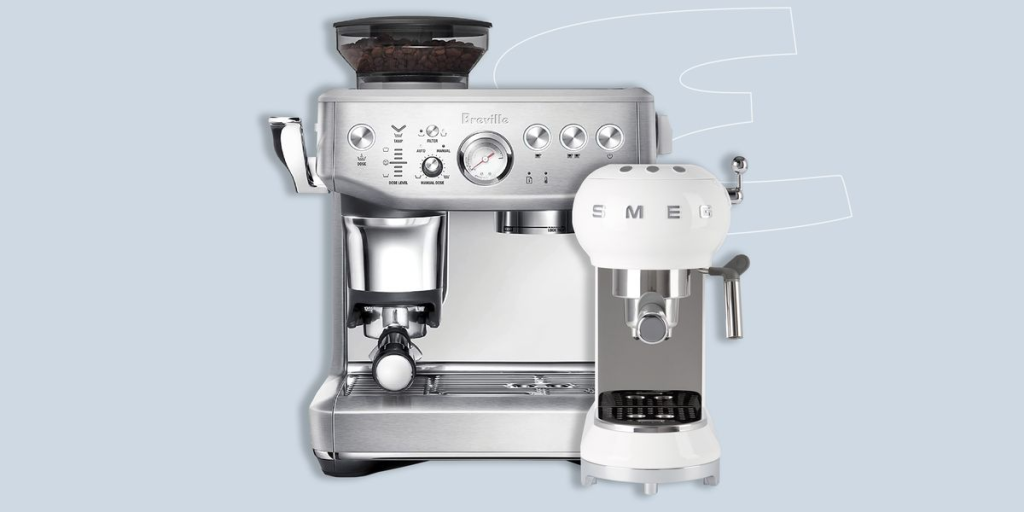
We take our beans seriously over here. No really, we don't fuck around when it comes to beans. Nobody is more freakish about coffee than we are. (That's a lie, the nerds on r/coffee are probably decades ahead of us, in that regard.) But we absolutely know what a good cup of coffee is, and we know how to make it. Whether we're lounging our dream home, trekking the outdoors, or anywhere in between, we want something strong, smooth, and maybe even iced.
And when we're in serious need of a strong cup of mud, where do we turn? To our home coffee machines. And our editorial staff has gone through a lot of them. We've tinkered, tried, and tested just about everything on the market. When we're going to sleep at night, we're thinking about that perfect first sip in the morning, or we're thinking about how much we hate our current machine and need to try a new one.
Maybe you should quit caffeine for a bit... This seems like an unhealthy fixation.
Well, we're in too deep! We're going to write passionately about the our favorite coffee makers—the best coffee makers money can buy—and we're going to continue feeding our caffeine addictions. So join us, grab a mug, and get to scrolling. Everything on this list meets our impossibly high standards.
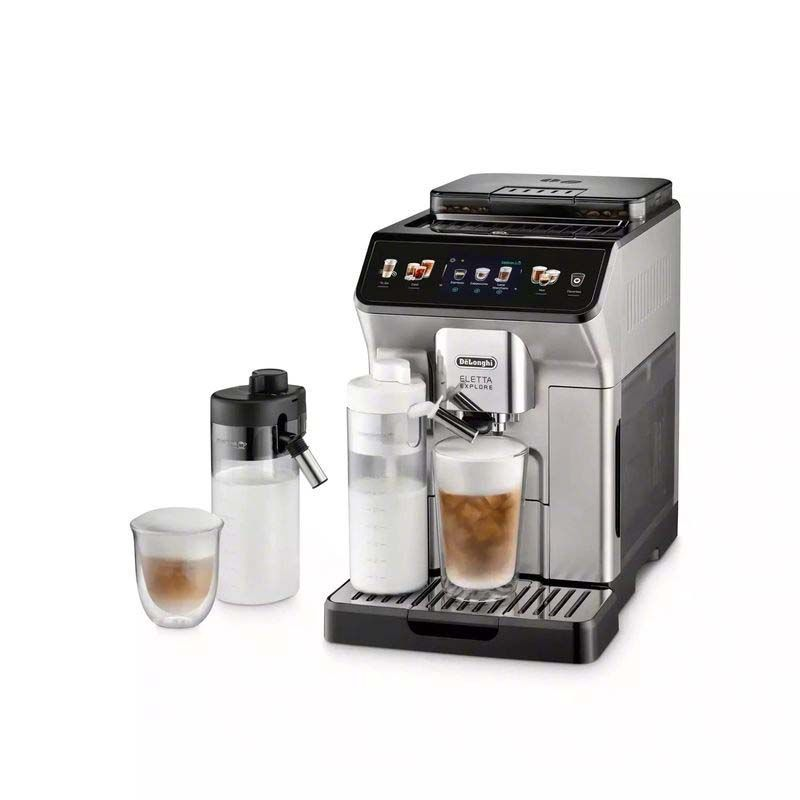
| Pros | Cons |
I already wrote nearly 1,000 words on why the De’Longhi's Eletta Explore Machine Is Worth Every Penny, but here’s the short version: It gives me cafe-quality drinks in my own kitchen. Look, a lot of people (most of us in this article) say this, but the Eletta Explore goes beyond a regular old cup of Joe or shot of espresso. You can make iced lattes, cappuccinos, and any other specialty drink that comes from coffee beans. Sure, a lot of machines can do this, but these don’t taste like they’ve come from a pod, they taste like they were made by your favorite barista at your favorite local coffee shop.
But there’s one feature that really makes this machine stand out over others: The way it makes iced coffee. The De’Longhi comes with De’Longhi cups, of course, and even a De’Longhi ice cube tray. The cubes are perfectly sized and turn your hot coffee drinks into iced ones. But! It goes one step further, because this machine has two milk frothers, one for hot milk, one for cold milk. Since this can froth milk cold (any type, even plant based), the fluffy milk pours over those perfect ice cubes and doesn’t melt them. The result: The perfect iced coffee. Maybe even better than your usual spot. —Krista Jones, Senior Commerce Editor
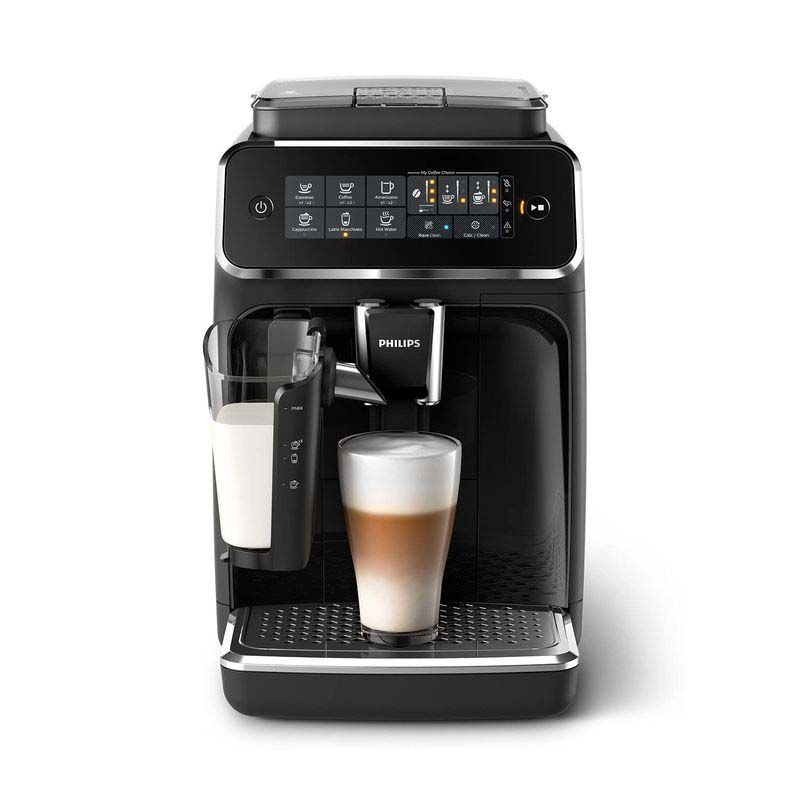
| Pros | Cons |
I think about coffee makers a lot. Always wondering if there’s a machine or method out there that’s somehow better than the system I’ve employed for however long in my home at that given moment. I’ve got an automatic drip coffee machine, an expensive espresso rig, French presses, stovetop espresso pots—maybe you get it. And if you’re like me—as in, unable to commit—there’s actually finally a machine that’s well-suited to your short attention span. The Philips 3200 lets you have coffee, espresso, cappuccino, and lattes at the press of a button. (Seriously, you press “cappuccino.”) It’s intuitive as hell, and your settings are highly customizable. And the LatteGo milk froth system has to be one of the best frothers I’ve seen. Requiring minimal effort to make and almost none to clean.
A word of caution before I go: Don’t get your hopes up too high for the “iced” option. This thing, while impressive, does not include a refrigeration system, so your drink will still need to be chilled post-brewing. —Madison Vain, Digital Director

| Pros | Cons |
First thing I noticed about The Bruvi was it's look. The off-white and wood finish makes it feel so homey. Seeing it in the kitchen would physically lower my heart rate. Making coffee with this thing was my daily detox from harsh stainless steel.
Beyond the look, I was blown away by how much it can do and how intuitive it is. Coffee, espresso, iced, cold brew, Americano, tea, low acidity, big cup, small cup—all with one press of a button on the easy to read screen. That easy! It brews quietly, and it plays a soft little tune when you're done. The best thing, though: This is the most eco-friendly pod machine on the market. The guilt-free pods are made to biodegrade in the landfill. —Luke Guillory, Associate Commerce Editor

| Pros | Cons |
When I want to make my coffee fast and head out the door, the Easy Coffee Machine is my secret weapon. Unlike many pod coffee machines I’ve used, this one has a rich, bold flavor in every cup. The ESE pods are eco-friendly and compostable, which would be a win itself, but it helps that the taste carries that strong, vibrant aroma that Illy coffee beans are known for. It’s ridiculously easy to use this machine—just fill it up with water, put in your pod, and boom—you have a delicious, steaming cup of coffee waiting for you. Plus, it certainly helps that the sleek, compact design is perfect for any kitchen countertop, no matter how much space you have (and trust me, I don’t have a lot of it). —Trishna Rikhy, Associate Style Commerce Editor

| Pros | Cons |
I had to talk about the humble Moka Pot. I bought one back in college, and I still use it most days. These things are the backbone of homemade coffee across Italy, and they're one of the best-ever pieces of Italian design. As easy to use as a French press or percolator, but the end result is a richer and smoother psuedo-espresso.
If you're dipping your toe into at-home espresso, this is the starting point. With just a hotplate and handheld milk frother, you can make your own macchiato, latte, cappucino, or cortado. For size and price, nothing will take you farther. —L.G.
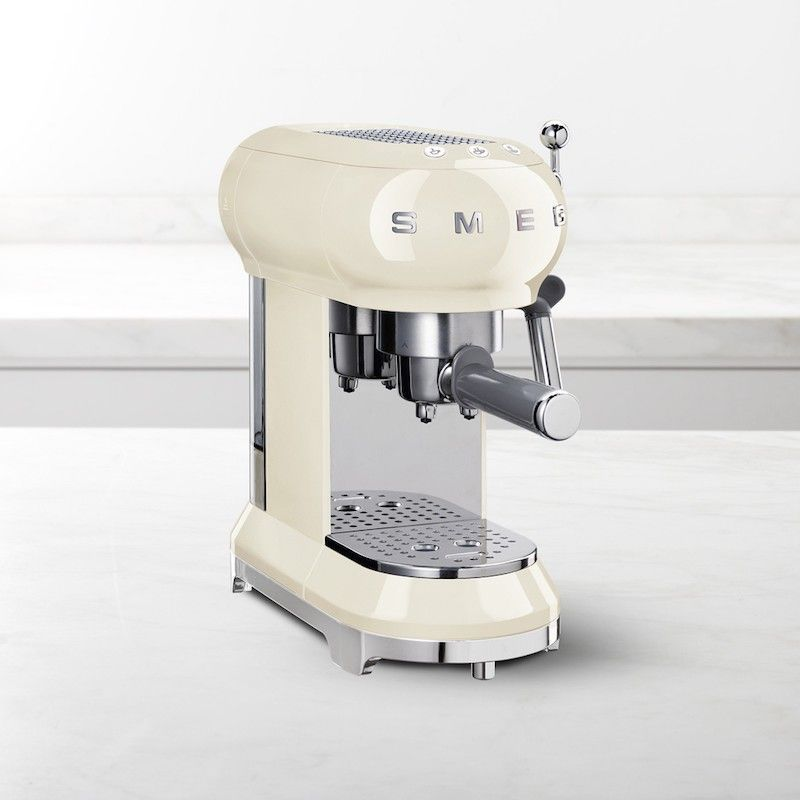
| Pros | Cons |
But eventually I wanted to upgrade to a proper espresso machine. And I'm not a huge coffee snob (yet!), so for the purpose of this review, I did the pretty machine.
Before this review, I wasn't a fan of SMEG's retro design vibe. I thought the whole "look" was too much, too try hard, annoying, or whatever. Turns out, I was just coping with the fact that I was too broke to afford it.
The second I put this espresso machine on my countertop, I took back everything bad I'd ever said about the SMEG look. It looks so, so, soooo good. The 50s-inspired shape I thought was "too much" is actually just beautiful. The rounded edges and pop of color is the perfect antidote to all the sharp lines in my kitchen. The textured top is the perfect place to store espresso cups and saucers. Plus, the cream color isn't too bold, so it really just blends in.
Oh! And it's the a great simple espresso maker. There's three buttons: Single shot, double shot, and steam. No iced this or pre-made that. I bought a frothing pitcher, and now I can go barista mode and make whatever espresso-plus-milk drink I want. Most importantly: I look good doing it. —L.G.
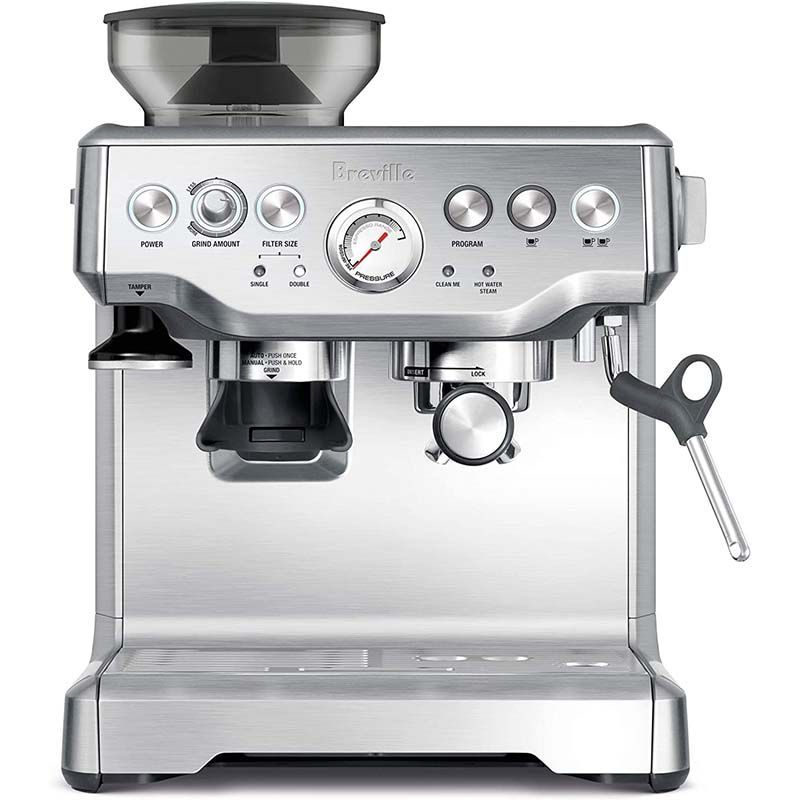

| Pros | Cons |
While I love my machine that makes iced coffee, I love one more machine that makes just straight up good espresso. A recent winner of our Home Awards, the Breville Express Impress is all about the grind. This thing is precise. It took me awhile to learn all its little tips and tricks, but now it makes me feel like a true Italian barista whipping up a bold cup of espresso. One of the hard parts about using a machine like this is you often have to guess your grind, but this one takes that scary work out of it for you. The Precision Measurement feature actually autocorrects your dose, making it easier to get the right flavor and blend. It also features a very, very cool assisted tamping method with a seven degree ‘barista twist’ that helps you pack it down. All of this while offering 25 grind settings, so you can pick exactly what you want. Of course, there's a professional-feeling frother option on this machine too, perfect for a latte. Overall, it’s all about customization here. If you want a machine where you can choose every single detail about your cup of espresso, this is it. And considering all that, it leaves a much smaller footprint than most other competitor models, and it doesn’t look bad sitting on your countertop, either. —K.J.
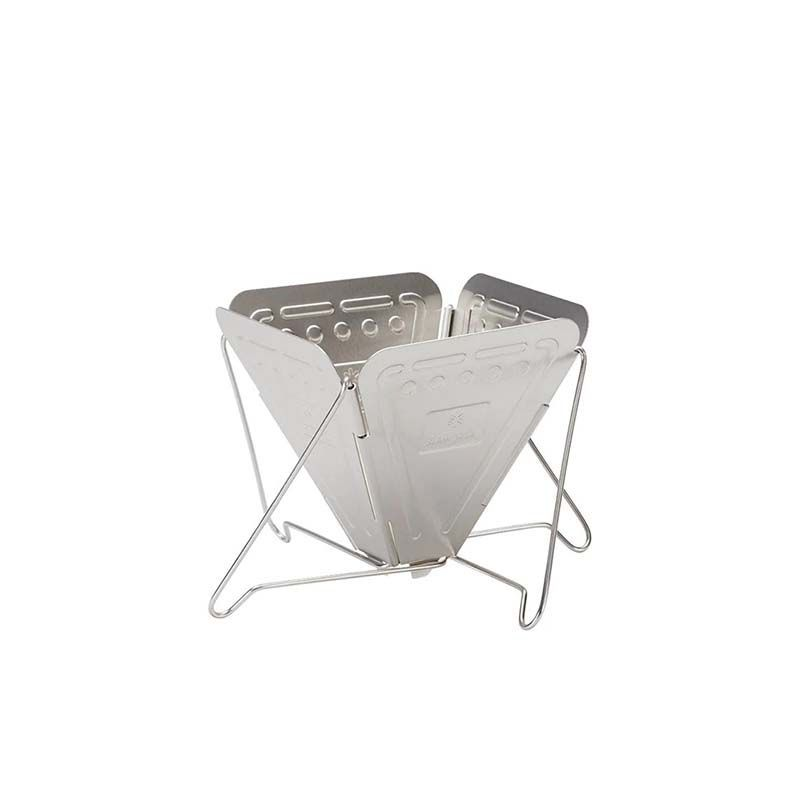

| Pros | Cons |
I developed a Stockholm syndrome situation with cowboy coffee. I told myself I enjoyed the black sludge at the bottom of my camping mug—that it's woven into the culture of America's wild, untamed outdoors. Fuck that, honestly. The only way cowboy coffee is any good is if you're using cardamom-spiced Turkish grounds. In which case, it ceases to be cowboy coffee and just becomes Turkish coffee.
The solution was a backpacking coffee maker. But the world of backpack coffee makers is full of products that were either too complex or too ugly for me. Snow Peak's collapsible stainless steel model was the only one I loved.
First, the price is reasonable. Second, it's light enough (4.9 oz.) and packs down thin enough to be an easy backpacking option. And third, it makes good, consistent coffee. I don't have to fiddle with an AeroPress or clean a French press. It's just hot water over a filter full of grounds. Rinse my cup, toss the filter, fold up the drip, and go. —L.G.

| Pros | Cons |
I also tested probably the most complex coffee maker on this list. The Spinn is as easy as a pod machine, but it grinds the beans fresh, so you end up with an infinitely better tasting cup of coffee.
This thing can make about 30 unique drinks—cold brew, drip, milk drinks, even the base for an espresso martini. So, the simple interface on the front of the machine was pretty much useless beyond setting it up. I made 99.9 percent of my drinks from the app. Which, unlike any other app-based appliance I've used, was incredibly easy to set up and always reliable.
The app is easy to use, the machine makes a ton of drinks, the bean grinding only takes a few seconds, and refilling the machine is as easy as opening the top and dumping in more beans. (You can actually sign up with Spinn, and auto order beans when your maker is getting low.) Typically, I'd say I don't want all this tech in a coffee machine, but I'd be lying if I said I didn't have the time of my life making an espresso while I was still laying in bed. This is the future. —L.G.
Originally published on Esquire US
A growing chorus of concerned former “addicts” are trying to wake people up to caffeine's negative effects.
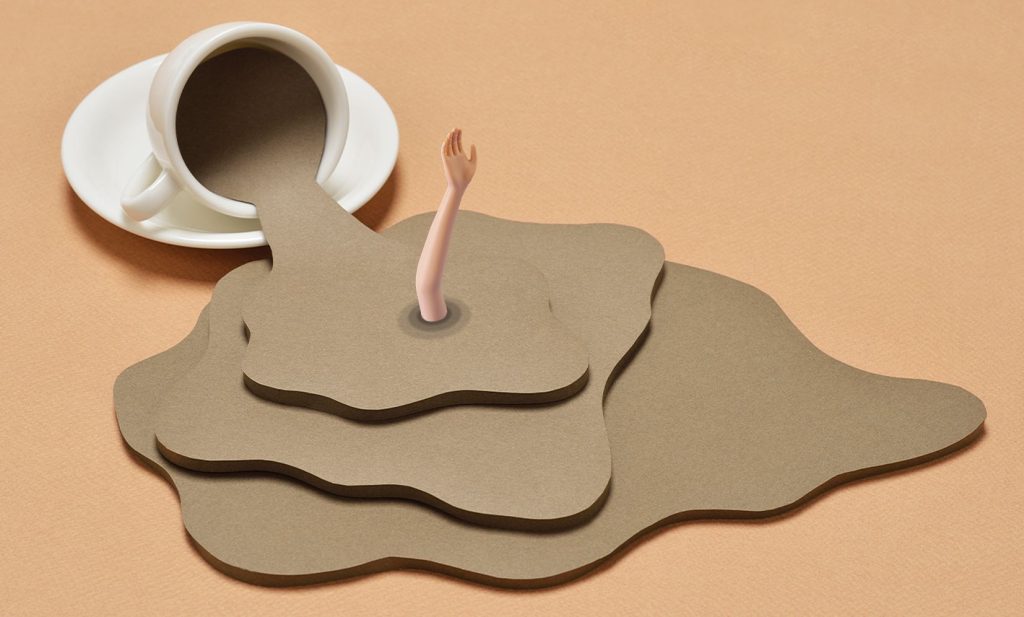
Petty Officer Second Class Marcus Bivens stood before a panel of US Navy officers, hands cuffed behind his back, facing charges of an unauthorised absence.
For his first 15 years of service, Bivens had been considered a “squared-away sailor”—orderly, competent, conscientious. A sailor officers could rely on. But he had been missing work lately, sometimes for weeks at a time, and now he was standing in front of an ad hoc disciplinary tribunal investigating his rapid and seemingly inexplicable decline in job performance. Bivens could no longer physically complete his work tasks, even though it was an administrative job.
Several weeks prior, Bivens was driving home on I-15 from the Coronado naval base in San Diego when his eyesight suddenly went double. “It was terrifying,” he recalls. “I literally drove home with one eye closed.” Bivens made it to his house safely but immediately collapsed into bed, clothes still on, and slept for eleven hours. When he woke up, the double vision was worse.
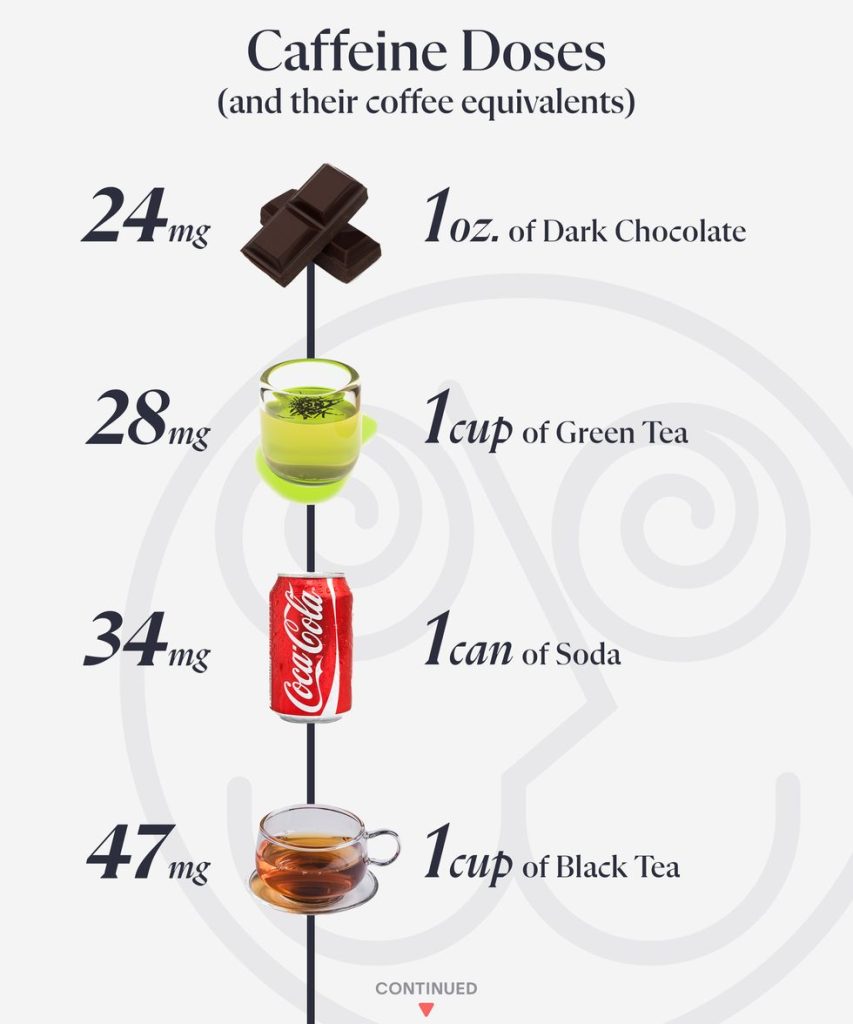
He went to the hospital, where he was subjected to a battery of tests. Doctors examined his eyes, his ear canal, his blood pressure. He was administered an EKG and had blood drawn. All the test results were normal, flummoxing a team of ophthalmologists and neurologists. “Every doctor took out their phone and Googled my symptoms, trying to figure out what was going on with me,” Bivens says. He was eventually diagnosed with myasthenia gravis, a rare neuromuscular disorder that typically affects women between the ages of twenty and thirty.
Bivens’s condition worsened over the next four months. He suffered tremors, sensitivity to light, aches throughout his body, and twitchy eyes. He slept just three to five hours a night. A self-described gym rat, Bivens lost his strength; he couldn’t do a single push-up. Doctors performed MRIs and MRAs and conducted more blood work. They wondered if Bivens had lesions on his brain. They prescribed him Ambien, Zoloft, Xanax, and Cafergot, a caffeine stimulant used to treat headaches. He was given an eye patch to alleviate the double vision. None of the tests revealed any abnormalities, and none of the doctors he saw could give him a satisfactory explanation for his bizarre array of symptoms.
At his lowest point, Bivens suffered intrusive thoughts. A disembodied voice whispered to him, “You’re gonna die.” He would hide in his closet, away from any overwhelming stimuli, praying for God to spare him. “It was hell on earth,” he says.
In front of the disciplinary review board, Bivens admitted he was having suicidal ideations and was placed on psychiatric hold for a week. A year later, he was medically retired from the Navy. The condition would plague him past that.
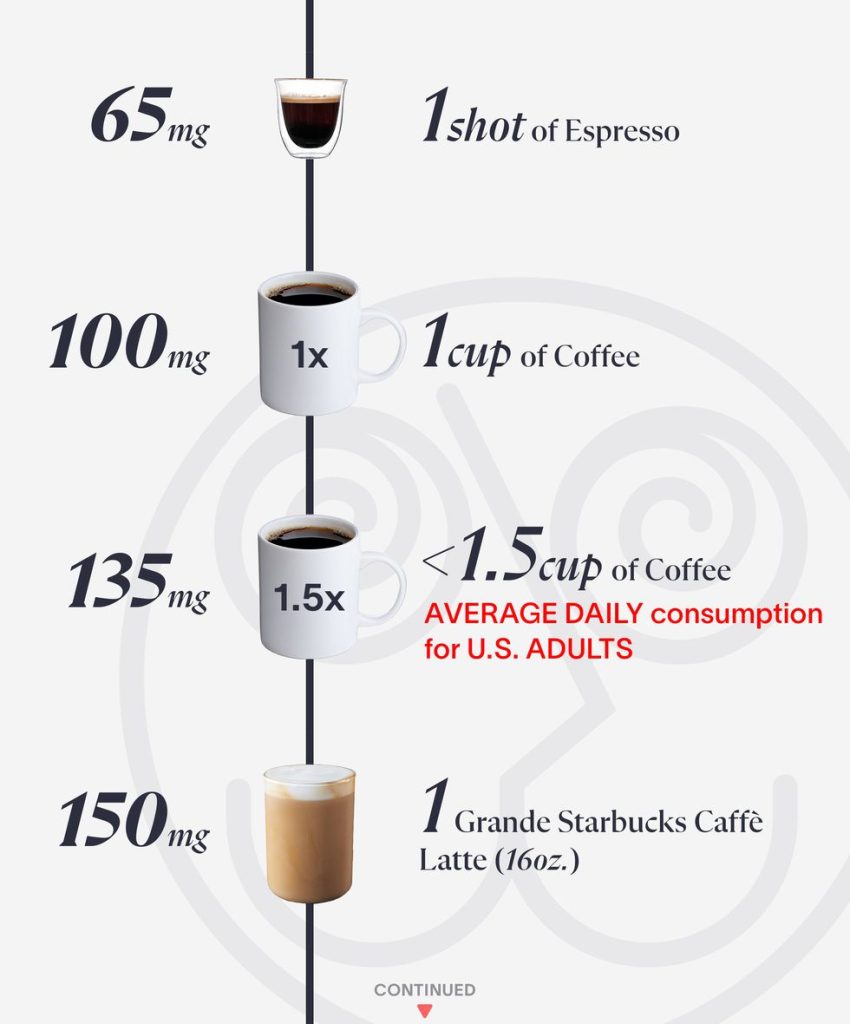
Bivens now believes the source of his medical issues was neither a disease nor a mental illness. Rather, he attributes his health decline to caffeine, the most commonly used, socially acceptable psychoactive substance in the world. For years, Bivens had been consuming close to 1,000 milligrammes of caffeine per day, two and a half times the daily recommended limit and the equivalent of more than ten cups of coffee. The habit had wreaked havoc on his central nervous system and in turn caused myriad physical and psychological problems.
“People don’t understand that caffeine is an actual drug,” says Bivens. “It’s not Kool-Aid.”
There is perhaps no mind-altering substance as tightly woven into the fabric of daily life than caffeine. Nearly 80 percent of adults in the US consume caffeine, in some form, every day. Coffee is the primary caffeine-delivery mechanism for many people—two thirds of American adults drink it every day—and many consider it an indispensable part of daily life. T-shirts and, naturally, coffee mugs exclaim, “Not before I’ve had my coffee” or “But first, coffee,” as if the travails of everyday living are impossible without a morning cup of joe. For some, coffee even serves as a handy substitute for having a personality. Whether it’s new mothers who think they should have a priority line at Starbucks; snobs who traffic exclusively in organic, sustainably grown fair-trade beans; or Zoomers sharing their insane coffee concoctions on TikTok, conspicuous coffee consumption is a cultural signifier. Entire human interactions—the coffee date, the coffee break at work, the post-dinner mug—revolve around its ingestion.
(Coffee alone cannot quench our cultural thirst for caffeine. Energy drinks are a fraction the size of the coffee market, but Americans still spend almost USD14 billion a year on them, and the category is rapidly growing.)
So ubiquitous is caffeine in our culture that it doesn’t even register to people as a drug. Step out of the office for a midafternoon cigarette and people might look at you askance. Get caught doing a bump of coke in the office bathroom as a midday pick-me-up and it’s grounds for immediate termination. But slam a Monster or a quad-shot Americano at work and people will think you’re a go-getter.
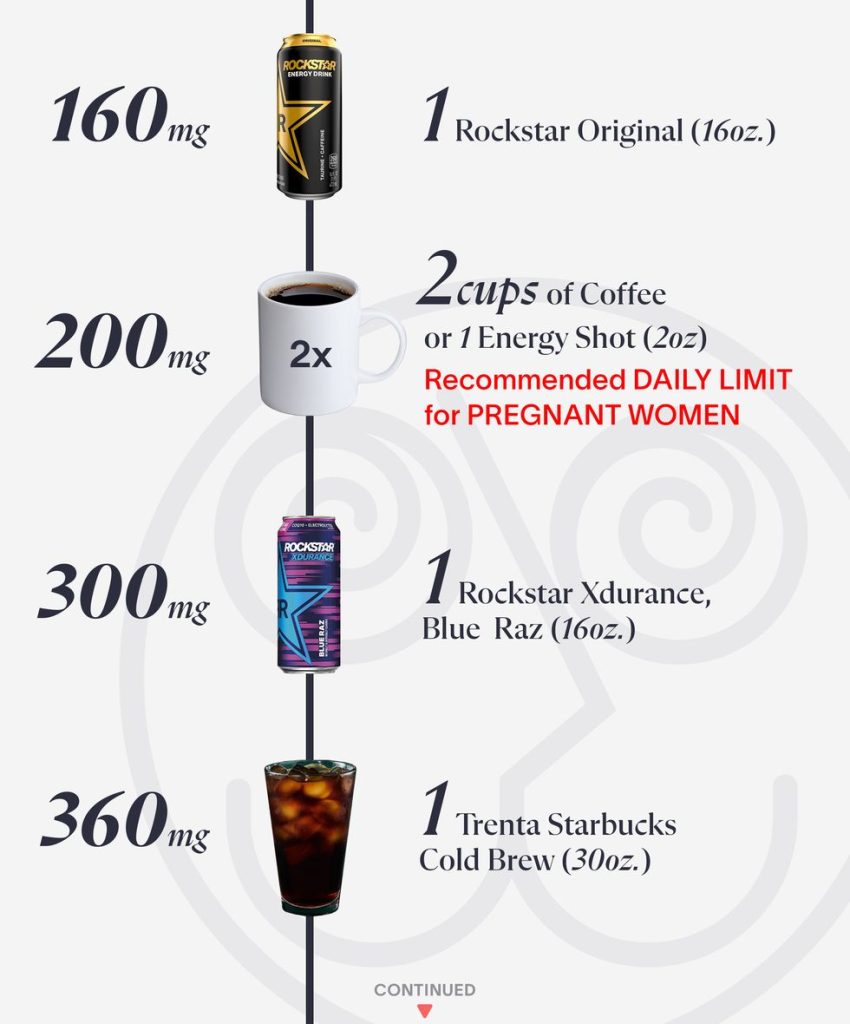
That perception is increasingly being challenged by a small but growing choir of laypeople and experts making a concerted effort to raise awareness about the potential downsides of caffeine dependence. “Caffeine is wildly misunderstood, especially with primarily anxiety-prone people,” says Mark Johnson, a 34-year-old video producer in Greenville, South Carolina.
Johnson’s recovery from caffeine started three years ago, when he began to suspect coffee was the source of his personal and professional problems. A commercial videographer, he creates TV spots and YouTube videos for major brands. The hours are long and, at the time, Johnson was creatively unfulfilled and felt he was burning out. He used caffeine to power through his work, drinking multiple Bang energy drinks a day on top of his morning cup of coffee. “I felt terrible all the time,” he says. During particularly acute periods of anxiety, Johnson would experience derealization, a sense of detachment from one’s surroundings—or the dreadful feeling that the physical world, as you perceive it, is not in fact actually there. He investigated the causes of his anxiety and eventually discovered r/decaf, a Reddit forum for people struggling with caffeine.
Thus began cycles of quitting, withdrawal, and relapse whenever he needed to crank out a project at work. The first time he suffered withdrawal from caffeine, Johnson slept more than fourteen hours a day for a week and felt suicidal. “I’m not a naturally depressed person but I laid around all day,” he says. “You feel like there is no point to life.”
Many people quitting caffeine say the physical withdrawal symptoms are the biggest obstacle. Some report headaches so severe it’s impossible to function. (One of the strangest aspects of caffeine is that it is both a common cause of and, at other times, an effective treatment for headaches.) More than anything, they report feeling really fucking tired. After years of relying on caffeine to fuel them through school, work, and social life, people often don’t have energy for their everyday lives when they quit cold turkey, finding they’ve been under-rested for years. “Caffeine just masks fatigue,” says Johnson.
Members of r/decaf use the language of addiction (e.g., “sobriety,” “relapse”) to describe their relationships with caffeine, which is controversial because caffeine addiction is not a formally recognized diagnosis (perhaps not yet). The latest edition of the Diagnostic and Statistical Manual, the official reference guide for defining and diagnosing psychiatric disorders, lists caffeine withdrawal as a condition, but it doesn’t include caffeine use disorder. The American Psychiatric Association, the organization that oversees the manual, says it’s considering caffeine use disorder for inclusion in the next edition.
“Since non-problematic caffeine use is so common and widespread, it may be difficult for some health professionals to accept that caffeine use can result in the same types of pathological behaviors caused by alcohol, cocaine, opiates, or other drugs of abuse,” Merideth A. Addicott wrote in her 2014 study on the subject while she was a psychiatry researcher at the Duke-UNC Brain Imaging and Analysis Center. “Yet there is evidence that some individuals are psychologically and physiologically dependent on caffeine, although the prevalence and severity of these problems is unknown.”
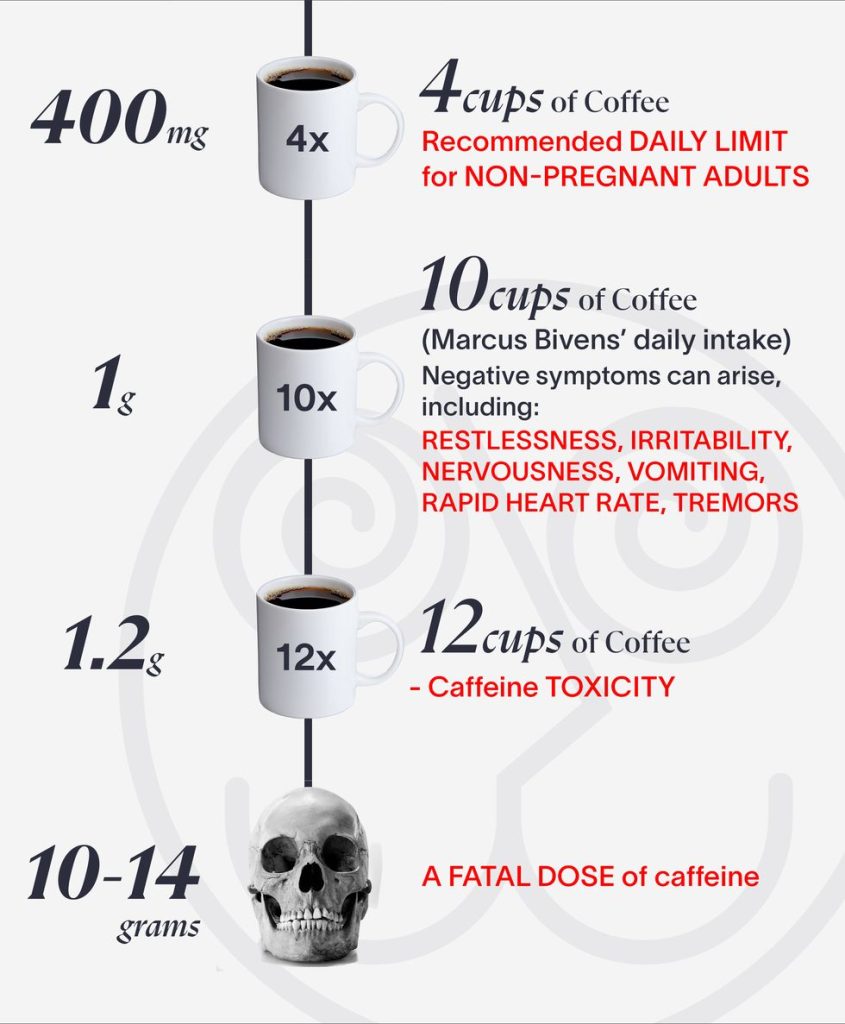
Caffeine might not meet the strict medical definition of addictive, but it does meet more general criteria, according to self-professed caffeine addicts: 1) Addicts continue using caffeine despite its negative effect on their lives, and 2) they want to quit but they have trouble doing so. “It’s one of the only things it’s acceptable to be addicted to,” Johnson says.
Perhaps no one has done more to bring attention to the physical and psychological effects of caffeine than Michael Pollan, arguably the most respected food-science writer in the world—ironic given that Pollan both openly identifies as an addict and ardently defends the positive effects of caffeine. “Yeah, I’m addicted to caffeine,” he admits to me. “So what?”
Pollan investigated his relationship with caffeine in This Is Your Mind on Plants, his 2021 book about the psychoactive properties of various flora. A lifelong coffee and tea drinker, he quit caffeine for three months as research for his chapter on the substance. The effects were drastic. “I felt out of my body,” Pollan says about his caffeine withdrawal. “I felt like I had contracted ADD. I couldn’t wait to get back on it.” A YouTube clip of him recounting his caffeine withdrawal on The Joe Rogan Experience has been viewed nearly 10 million times.
The experiment left Pollan with a newfound appreciation for the powers of caffeine—that first cup of coffee after withdrawal was “psychedelic,” he says—but he quickly returned to his usual morning coffee habit after his months off.
Pollan points to studies showing that caffeine may have protective benefits against some types of cancer, dementia, and Parkinson’s. Caffeine can boost athletic and work performance, and coffee is the leading source of antioxidants in the American diet, a troubling sign of just how few vegetables the average American eats. (This applies only to coffee specifically, not caffeine generally. Red Bull won’t neutralize free radicals in your body.) Pollan isn’t dismissive of the potential negative side effects of too much caffeine; he acknowledges that it can disrupt sleep and that it can make people jittery, especially if they’re already prone to anxiety. Generally speaking, he recommends no caffeine after noon.
But the benefits of caffeine far outweigh the risks, he says. Caffeine gave us the Enlightenment, the Age of Reason, and the Industrial Revolution, Pollan writes in his book. Prior to the spread of coffee throughout Europe, people mostly drank beer, a beverage that isn’t conducive to intellectual exchange. Coffee, however, was the catalyst for all kinds of scientific, political, and artistic breakthroughs. Without caffeine, we might still be living in a perpetual drunken stupor, dirt poor, toiling the fields for the benefits of feudal lords. “On balance, the story is very much in favor of drinking coffee and tea,” Pollan says.
“People blanch at this word addiction because they assume that it means unhealthy. And I don’t think that’s a good enough reason to give up caffeine,” he adds. “People love this idea of complete control over their lives, and addiction fights against that. It suggests something else is running me. For people who crave autonomy, that’s difficult. But I like ritual behavior.”
Lisa Axelrad, a nutritionist in Los Angeles, has a more negative view of the substance. She advises her clients to drink no more than one cup of coffee a day and to cut out all other forms of caffeine. “Caffeine is addictive,” she says. “Coffee leads to an afternoon crash and stains our teeth, and that’s from just one cup a day. If you’re drinking more, you are likely to suffer from headaches, disrupted sleep, irritability, high blood pressure, jitters, insulin resistance, and hormone disruption.”
Recovering caffeine addicts and Pollan do agree on one thing: The prevalence of caffeine allows people to never question their relationship with it. (Part of the reason Johnson agreed to moderate r/decaf, an unpaid position, was to combat the widespread social acceptance of coffee and make more people aware of its potential ills.)
“I would lie down to sleep at night, and my brain would run at a mile a minute,” says Bianca Zaklikowski, a forty-one-year-old self-described recovering caffeine addict. “My heart was beating too fast. My blood pressure was too high.” Zaklikowski consulted her physician about her health problems, and it took one conversation about her diet for him to recommend she drink less caffeine. On a typical day, she would drink sixty-four ounces of Diet Coke in addition to as many as three double-shot skinny vanilla lattes from Starbucks. That this was, simply, too much had never occured to Zaklikowski. Her blood pressure and resting heart rate are at healthy levels since cutting it from her diet, and she finally feels rested when she wakes up.
“Caffeine,” she says now, six years since she last consumed the substance, “is a lifestyle.” For Zaklikowski, a single mother of two, that lifestyle included going on the occasional coffee date and bonding with other mothers over their shared love of the drink. Her infatuation with coffee culture began when she was a teenager and would visit the one hip coffee shop in her small Indiana town. “I felt like an adult,” she remembers, “like one of the characters on Friends.”
The sophistication we associate with drinking coffee is also what drew comedian Nikki Glaser to the substance. (With comedy specials on Netflix and HBO, a sold-out international comedy tour, and millions of social media followers, it’s fair to assume Glaser is, by far, the most famous member of r/decaf.) Glaser’s intake is remarkably similar to Zaklikowski’s—two to three Starbucks lattes a day, plus Diet Coke—but unlike Zaklikowski, she hasn’t fully kicked the habit.
“There’s something about drinking coffee that says, ‘I’m a part of the world. I have a big day ahead of me. I’m schlepping from meeting to meeting. I’m hitting deadlines.’ It’s a go-getter’s drink. It’s like carrying a briefcase,” Glaser says.
The seeds of caffeine addiction are planted in early childhood, she adds. Getting “hyper” on a Surge cola is the preadolescent version of getting twisted on booze. For her, acquiring a taste for coffee, a drink most children abhor, was a rite of passage akin to losing her virginity.
Stats on the number of people quitting caffeine are hard to come by, but there are signals that the anti-caffeine crowd is growing. “I hear from readers all the time that they stopped using caffeine, as if I recommended that,” Pollan says. R/decaf membership has increased 25 percent over the past year, to 34,000 subscribers, and there has been a boom the past several years in the number of low-caf or caffeine-free coffee alternatives on the market—Huel, MUD\WTR, Teeccino, matcha, as well as “coffees” made from mushroom, chaga, chicory, and dandelion.
Generationally, coffee consumption appears to be in decline. Less than a third (31 percent) of Zoomers say they can’t live without coffee, compared with half of Millennials and Gen Xers and nearly two thirds (61 percent) of Baby Boomers, according to a new study from the market-research firm NCSolutions. Zoomers are also less likely to keep coffee on hand at home. “Gen Z is more willing to go without coffee,” says NCSolutions CEO Alan Miles. “And while that might have something to do with age, there’s also a sense they may be gravitating towards healthier, more natural and environmentally sustainable foods and beverages.”
People love to debate the relative merits of different dietary philosophies (high carb, low carb, no carb, keto, carnivore, vegan, pescatarian, Mediterranean) and the health benefits of so-called “superfoods” (e.g., blueberries, chia seeds, kale, almonds, salmon), but suggesting that people should curb their caffeine intake might be the most contentious fight in all of food discourse—especially because it seems like every other week, a new study is published claiming that coffee is either the fountain of youth or certain to send you to an early grave.
If your response to this trend is “I’ll give up my coffee when you pry this mug from my cold dead hands,” you’ll be happy to know that Stephen Cherniske, the nutritionist who literally wrote the book on caffeine addiction, says that for most people, coffee in moderation is just fine. “Starting your day with a cup of coffee is not a problem,” he says. “But stringing yourself along with caffeine hit after caffeine hit as the day goes on is problematic. It’s like whipping a tired horse.”
Cherniske is a research biochemist and the author of Caffeine Blues, a book about the perils of caffeine overconsumption and a popular title among members of r/decaf. Years ago, during his clinical practice as a nutritionist, he realized that many of his patients were alarmingly overcaffeinated. Patients would report drinking just a few cups of coffee a day, only to reveal that their idea of one cup was a forty-ounce thermos. “At three of those a day, they were drinking more than 1,000 milligrams of caffeine,” Cherniske says. That amount of caffeine overstimulates a person’s nervous system, causing agitation, elevated heart rate, and high blood pressure.
Caffeine is water soluble, so its effects on the human body occur rapidly, Cherniske says. Almost all (99 percent) of a caffeine dose is absorbed in the bloodstream within forty-five minutes of ingestion. And because caffeine is also fat soluble, it easily passes through cell membranes, including the blood-brain barrier, providing a jolt of energy and alertness. In skeletal muscles, caffeine increases the mobilization of calcium ions, boosting strength and lowering reaction time. (Caffeine is a well-known performance-enhancing drug among athletes, albeit a legal and largely unregulated one.)
In high doses, however, the mental buzz from caffeine can tip from increased focus and mental energy to irritability and panic. “Stimulants, like caffeine, activate the same response humans had thousands of years ago face-to-face with a saber-tooth tiger,” Cherniske says. That fight-or-flight response was integral to our survival as a species in prehistoric times, but it’s unnecessary, and possibly counterproductive, for your nine-to-five desk job. People who consume too much caffeine are in that heightened state of awareness. Their bodies pump adrenaline for too long, and that causes anxiety, trouble sleeping, and extreme swings in energy level and mood.
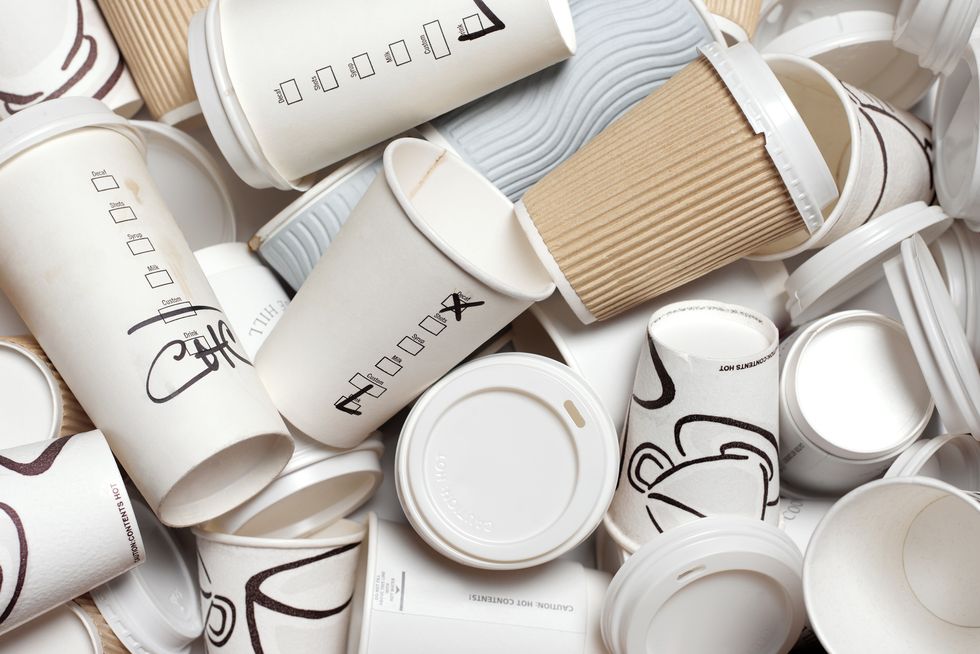
Problems with caffeine are often genetic, Cherniske says. In 2006, nutrition scientists at the University of Toronto discovered an enzyme, CYP1A2, that accounts for at least 90 percent of caffeine metabolization. People with the CYP1A2-1F variant metabolize caffeine more slowly, which explains why some people can be wired from one cup of coffee while others can take a shot of espresso at 9PM and still have no trouble falling asleep.
Even so, Cherniske doesn’t want to take your coffee away. He drinks three cups a day himself. Others, though, advocate for drastic measures. “More people need to know that caffeine is a neurotoxin and it’s hurting you,” Bivens says. “I would like people to treat caffeine the way we treat cigarettes. There should be a warning.”
Bivens didn’t discover that caffeine was at the root of his problems until a year and a half after he left the Navy, when he was in the throes of another mental health crisis. Researching online, he found that caffeine can exacerbate anxiety, especially in large amounts. Bivens was drinking a pot of coffee a day at the time.
This launched a vicious cycle in which Bivens would quit caffeine, go through withdrawal, and see his health improve, only to inexplicably start drinking caffeine again and suffer another spell of panic attacks and intrusive thoughts. Caffeine had been a staple of Bivens’s diet since growing up in Mobile, Alabama, and giving it up proved hard. He drank at least two cans of soda a day as a kid. “That’s just what everybody did,” he recalls. “You go to McDonald’s, and your burger comes with a Coke.” (He now blames caffeine for the chronic headaches he’s suffered since childhood.) In the Navy, Bivens and his fellow sailors drank a sludgy, homemade energy-drink concoction called “Ricky Rockets,” equal parts coffee and sugar, to get through boot camp. “A typical day for me was a cup of coffee in the morning, two to three energy drinks at work, another energy drink or soda on the way home, and then another soda for dinner,” he says.
Bivens’s last relapse, his sixth, occurred three years ago and ended with him staying up until 3AM researching conspiracy theories about 9/11 and Prince’s death and getting into heated exchanges in YouTube comments sections. He hasn’t had a drop of the hard stuff since, and he says his health has improved dramatically. The headaches are gone, his vision is steady, his energy level is stable throughout the day, he sleeps through the night, and his anxiety and impulsiveness have ebbed. Bivens now counsels other people on the dangers of caffeine and how to kick their own habits.
“I’ve talked to many people who are a year off of caffeine and they’re still dealing with crazy symptoms, everything from neuropathy to psychosis,” Bivens says. These people have suffered a “caffeine injury,” as he calls it, and he’s certain there are untold numbers of others out there also suffering needlessly. If they only knew the reality of caffeine, he argues, their pain might ease. “Caffeine injures your central nervous system,” he says. “A lot of people are walking around being affected by caffeine and they don’t even know it.”